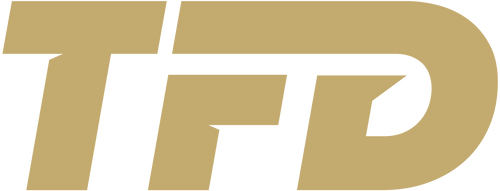
“These conditions will also impact your ability to perform, training output will start to decrease and it will be difficult to keep the body composition you need to fight in your desired weight class.”
So many female athletes struggle with an all too familiar picture of abnormal hair growth on their body, cystic acne, body composition changes, and period irregularities. Despite the familiar presentation many athletes go misdiagnosed or completely passed off by the medical system.
PCOS (Polycystic Ovarian Syndrome) is a complex diagnosis but having a bit more understanding of potential differential diagnosis may allow you or your medical team to provide the best support possible to improve your health and performance. PCOS has four types and for athletic purposes I would like to highlight two of them, adrenal and inflammatory. The second differential I would like to highlight is Hypothalamic Amenorrhea (HA). These conditions overlap presentation wise but treatment wise can differ so getting these right are imperative to your future health.
Let’s break down the diagnostic criteria that we have:
PCOS Diagnostic criteria
Absent or irregular menstrual cycles
Hyperandrogenism
Polycystic ovaries (more than 25 follicles, 2-9mm, or greater than 10ml): Ultrasound diagnosis
Inflammatory PCOS: Chronic inflammation can cause the ovaries to increase testosterone levels. Inflammatory type conditions likely go hand in hand with skin manifestations (eczema, psoriasis), joint pain and digestive issues.
Adrenal PCOS: The root cause of this type of PCOS is stress to the system rooted in adrenal gland activity. The classic presentation of PCOS shows elevated blood levels of all androgens including testosterone and androstenedione whereas with Adrenal PCOS we just see an elevation in DHEA-S with normal testosterone and androstenedione levels.
The two other types of PCOS are insulin resistance type and post birth control pill PCOS. Post birth control is temporary and insulin resistance PCOS comes with a host of other symptoms like metabolic syndrome and pre-diabetes.
Hypothalamic Amenorrhea:
Absent or irregular menstrual cycles
Polycystic ovaries are possible
Adrenal PCOS and HA are extremely comparable and in my opinion it doesn’t matter what we call it as long as we are addressing the root cause of the symptoms. This chart highlights blood work results that would help differentiate Hypothalamic Amenorrhea versus PCOS.
*Just to note again in the Adrenal PCOS diagnosis we would not likely see elevated androstenedione nor testosterone.
So what is happening and what do we do about it?

For the super nerds like myself I will include this image breakdown of what is going on with the endocrinology with Adrenal PCOS and HA. Chronic cortisol release impacts Gonadotropin Inhibiting Hormone (GnIH), this suppresses Gonadotropin Releasing Hormone (GnRH). Downregulation of GnRH tells the pituitary to downregulate the release of Follicle Stimulating Hormone (FSH) and Luteinizing Hormone (LH) which then downregulates the ovaries release of estrogen and progesterone.
To simplify this, essentially chronic stress to the system whether it be underfueling, overtraining, poor sleep habits, life stressors, anxiety, and perceived stress impacts a hormone cascade in our system that essentially reduces the release of sex hormones and impacts periods, skeleteal system, cardiovascular system, and potentially an athletes mental health.
Female athlete triad, now renamed as Relative Energy Deficiency in Sport is claimed to be a massive contributor to Hypothalamic Amenorrhea, in my opinion I believe it to be a combination of stressors that would lead to Adrenal PCOS or HA. It seems that the body’s ability to recover from nutritional deficits for a shorter duration is good but problems arise with compounding stressors on the body.
Testosterone has always been touted as a competitive edge in sport and to a degree it is for women. The issue arises when testosterone elevation or hormonal disruption is due to these systemic issues. Although your goal is not likely to have a baby before you next fight, long term fertility outlook can be impacted but these chronic hormonal imbalances. These conditions will also impact your ability to perform, training output will start to decrease and it will be difficult to keep the body composition you need to fight in your desired weight class. Higher androgen levels are also present with cystic and often painful acne on the body along with thick, coarse hair growth on your arms, chin, naval, and lower back.
Management here requires some support from health professionals and a solid coaching staff that has your health as a top priority. Ideally we look at avoidance techniques first off:
-Minimize time spent in energy deficits (including under fueling and overtraining)
-Prioritize sleep
-Seek counselling/ support for mental emotional struggles
-Seek assistance if you struggle with anxiety
-Work on parasympathetic breath work
If a diagnosis of inflammatory PCOS arises we want to determine where the inflammation is coming from. Often gut issues seem to be a huge contributor to systemic inflammation along with ruling out any autoimmune conditions. Determining and treating the root cause of inflammation should resolve the systemic presentation of increased testosterone.
As for Adrenal PCOS diagnosis or HA the key will be to mitigate the stress on the system. This may look like scaling back training, taking a close look at nutrition, and supporting the adrenal glands though B vitamins, vitamin C, magnesium, and adaptogenic herbs.
This is a complex set of symptoms but it’s imperative to highlight that not having a period is a sign of dysfunction (unless you are on birth control, read previous posts). Seek out professional support and let your coaches and trainers know if you are starting to see issues.
Dr. Nikole MacLellan ND, RD, CISSN
@sportsdockokes
